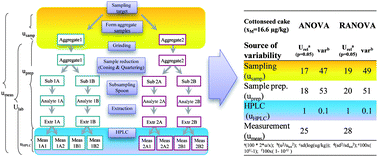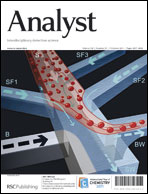Uncertainty from sampling in measurements of aflatoxins in animal feedingstuffs: application of the Eurachem/CITAC guidelines
Abstract
The duplicate method for estimating uncertainty from measurement including sampling is presented in the Eurachem/CITAC guide. The applicability of this method as a tool for verifying sampling plans for


 Please wait while we load your content...
Please wait while we load your content...